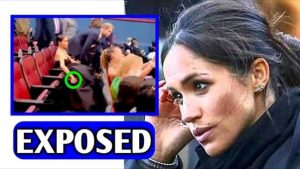In the modern fashion industry, sketches and illustrations are indispensable. The next great thing in runway fashion might be these easy sketches. Aside from that, a designer who can generate fantastic fashion illustrations and use these ideas to create amazing clothing pieces is likely to follow in the footsteps of Karl Lagerfeld and Marc Jacobs.
It is imperative for aspiring fashion designers to have a firm grasp of the fundamentals of design drawing if they hope to get into the business. As their name implies, fashion illustrators can work in a variety of related fields. The fashion and design industries, as well as freelance work, offer further opportunities for these individuals.
If you’re interested in a profession as a fashion illustrator, follow these suggestions.
Beginning with Talent and Interest In order to succeed in a creative field, you need to be able to draw well and have a genuine appreciation for the arts. No one is truly qualified for such a job if they lack either the interest or the ability to accomplish the work well. Drive and natural ability are inborn and cannot be taught. It’s something that comes naturally, and it’ll show itself in one’s drawings. Passion for art and style, however, combined with regular practice, can lead to greater skill in the drawing arts. Put forth the effort to draw every day and your skills will eventually show.
The second requirement is the ability to draw fashion sketches. Though sketching is comparable throughout industries, fashion has its own distinct flair. The human body and all of its parts and motions must be accurately represented for the character’s proportions to be accurate. Consider the standard height of a fashion model, which is five feet and eight inches. For more information visit greetingsus .
The third step is proficiency with image-editing tools.
While many artists still prefer freehand sketching, employers increasingly want candidates with experience in Adobe Illustrator and similar programs. Possessing such technical know-how can facilitate the creation of designs that are both simple and rapid to distribute. The fundamentals of using such programs can be learned from tutorials found on the internet by those who are not already familiar with them. One’s technical chops can be amped up and their resume bolstered by doing this.
Communication proficiency is the fourth component. All sorts of people are employed by the fashion and arts industry. Those who aspire to work in the fashion industry will encounter a wide range of customers. Therefore, a talent for interacting with others is essential for a career in fashion illustration. Working well with people of different backgrounds and personalities is essential. Additionally, building relationships with these individuals is crucial. This can be beneficial for professional development as well as expanding one’s network, both of which can lead to better opportunities in the future.
Fifth, gather the necessary equipment.
It’s crucial to get everything in order before starting out on a career in the arts. Tools of the trade for a fashion illustrator may include computer programs, stencils, pencils, paper, and fabric.
Experiential learning and advanced study are the sixth stages. The majority of the fashion industry’s designers and other professionals have degrees in the sector. In addition to gaining relevant information, you’ll also pick up some useful insights into the philosophies behind fashion and style. To make it in the fashion industry, it’s also crucial to have on.
On top of that, you’ll need some real-world under your belt. You can get a head start on your fashion design career by completing an internship. In today’s competitive job market, having extensive work experience can put you ahead of the competition.
It’s not simple to achieve success in the fashion world, where so many people have their sights set. Having the necessary information, training, and experience will get you over the hump. It takes talent and perseverance to become a famous artist.





